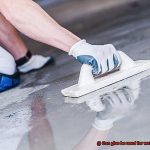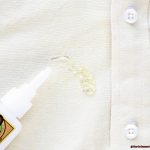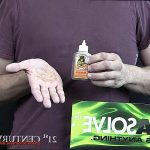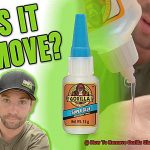Are you a crafting enthusiast, DIY maven or just someone who likes to fix things around the house? If so, then you’ve probably heard of Elmer’s glue – the versatile adhesive that has been a household name for generations. But what about using it as a sealant?
The thought of using Elmer’s glue as a sealant may pique your interest, but is it really an effective solution? Before you start stocking up on bottles of this trusty adhesive, let’s take a closer look at the science behind this method.
In this blog post, we’ll delve into the topic of using Elmer’s glue as a sealant and explore its pros and cons. We’ll also provide some handy tips on how to use it effectively for different materials. From understanding the chemical composition of Elmer’s glue to providing step-by-step instructions on how to use it as a sealant, we’ve got you covered.
So, let’s get started.

What is Elmer’s Glue?
Contents
This popular white glue is a staple in many households, and for good reason. Developed in the 1940s by Borden, Inc. and named after the founder’s wife, Elmer’s Glue is a versatile adhesive that can be used for a variety of projects.
Elmer’s Glue is primarily made from polyvinyl acetate, or PVA, which is a synthetic polymer known for its excellent adhesive properties. This makes Elmer’s Glue a reliable choice for a wide range of applications, from paper crafts to woodworking.
One of the best things about Elmer’s Glue is that it dries clear, making it perfect for projects where appearance is important. Plus, it’s non-toxic, so it’s safe for use by children.
Elmer’s Glue comes in several different forms, including liquid glue, gel glue, and spray adhesive. Liquid glue is the most common and can be used for an array of projects, such as fabric crafts or woodworking.
But did you know that Elmer’s Glue can also be used as a sealant? While it may not be suitable for every project, it can provide a protective coating to prevent moisture and air from entering an object. This makes it a great option for paper crafts or other items that won’t be exposed to harsh elements. However, keep in mind that Elmer’s Glue isn’t waterproof or weather-resistant, so it may not be the best choice for outdoor projects or items exposed to moisture.
It’s essential to remember that while Elmer’s Glue can provide some level of protection as a sealant, it may not be sufficient for all types of projects. For instance, varnish or polyurethane may provide better protection for wood and other materials exposed to the elements.
Can Elmer’s Glue be Used as a Sealant?
This water-based adhesive has been a staple in the crafting and DIY communities for years, but did you know that it can also be used to protect surfaces? Yes, it’s true. In fact, Elmer’s glue can work as a sealant in certain situations.
One of the biggest advantages of using Elmer’s glue as a sealant is its ability to create a strong bond between surfaces. When applied in thin layers, it can also create a protective barrier over surfaces, making it an effective sealant. However, it’s important to note that Elmer’s glue may not be suitable for all types of projects.
If you plan to use Elmer’s glue as a sealant, it works best on porous surfaces like paper, cardboard, wood, and fabric. This is because it can penetrate these surfaces and create a strong bond. However, it may not work as well on non-porous surfaces like metal or plastic.
It’s also important to keep in mind that Elmer’s glue is not a professional-grade sealant and may not withstand extreme weather conditions or heavy wear and tear. However, if you’re working on an indoor craft project that doesn’t require waterproofing or weather-resistance, then Elmer’s glue can be an excellent option.
Applying Elmer’s glue as a sealant is easy. Simply use a brush or sponge to apply thin layers over the surface you want to protect. Allow each layer to dry for 30 minutes to an hour before applying the next layer. Be sure to apply enough layers to create a protective barrier without making the surface too thick or clumpy.
Benefits of Using Elmer’s Glue as a Sealant
While it may be best known for its use in crafting, this versatile adhesive can also work wonders as a sealant on a variety of surfaces.
One of the key benefits of using Elmer’s glue as a sealant is its clear drying properties. This makes it an excellent choice for applications where appearance is important – you won’t have to worry about unsightly glue marks marring the final product. Plus, despite its transparency, Elmer’s glue provides a strong bond that can seal small gaps or cracks with ease.
Beyond its clear drying properties, Elmer’s glue is also non-toxic and easy to clean up with water. This makes it a safe and convenient option for DIY projects, especially if you’re working with kids or pets. And because it’s widely available at most craft stores and online retailers, it’s an accessible choice for those on a budget or those who need to complete a project quickly.
Elmer’s glue is also incredibly versatile, making it an ideal choice for both crafts and home improvement projects. It can be used on a variety of surfaces including paper, cardboard, and wood. Additionally, it can even be used as a protective coating for delicate materials such as fabrics and lace.
Limitations of Using Elmer’s Glue as a Sealant
While it can be an affordable and versatile option for certain projects, there are instances where it may not be the best choice.
One of the most significant limitations of using Elmer’s glue as a sealant is its susceptibility to breaking down in outdoor environments. Due to the fact that the glue is water-soluble, it can easily dissolve when exposed to water or moisture. This makes it less suitable for sealing items that will be used outdoors, such as garden ornaments or outdoor furniture.

Furthermore, Elmer’s glue may not provide a strong enough hold for heavy-duty projects. While it can work well for lighter projects like sealing paper crafts or envelopes, it may not be able to withstand the weight of heavier items. In these cases, a more heavy-duty adhesive or sealant would be required.
Lastly, it is vital to consider the long-term durability of Elmer’s glue. Over time, the glue may begin to break down or lose its adhesive properties, which can result in items coming apart or becoming damaged. Therefore, it may not be the most reliable option for projects that need to last for an extended period of time.
Alternatives to Elmer’s Glue as a Sealant
It has its limitations and may not always provide the best results. But don’t worry, there are plenty of alternatives to choose from that will work better for your project.
One fantastic option is Mod Podge. This versatile water-based sealer, glue, and finish can be used on various surfaces such as paper, wood, and fabric. Not only does it dry clear, but it also provides a durable protective coating that will last for years. Plus, it’s incredibly easy to apply with a brush or sponge.
If you’re looking for a heavy-duty sealant, consider using polyurethane. This clear synthetic resin is frequently used as a finish for wood surfaces due to its water-resistant properties. It provides an excellent defense against scratches and stains and comes in both gloss and matte finishes.
For a waterproof adhesive that can be used on glass, metal, plastic, and more, silicone sealant is an excellent option. Its flexibility allows it to fill gaps and cracks while providing a strong bond that will last.
If you need an adhesive that is resistant to water and chemicals, epoxy may be the answer. This two-part adhesive consists of a resin and hardener that are mixed together before application. It’s perfect for sealing metal, plastic, and wood surfaces.
How to Use Elmer’s Glue as a Sealant Effectively
Elmer’s glue is a versatile adhesive that can also be used as a sealant. However, using it as a sealant requires some specific techniques and knowledge to ensure it is effective.
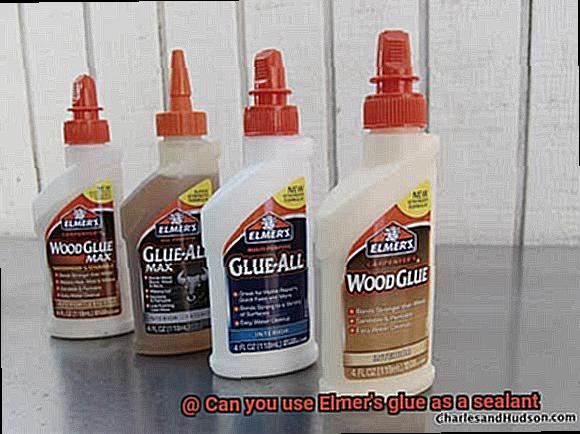
Let’s dive in now.
Choosing the Right Type of Elmer’s Glue
The clear or white school glue is the most suitable type of Elmer’s glue for sealing purposes. This is because it dries clear and provides a smooth finish. While the white school glue is a popular option, it may not be as effective since it doesn’t create a clear finish. Therefore, opt for the clear drying glue for the best results.
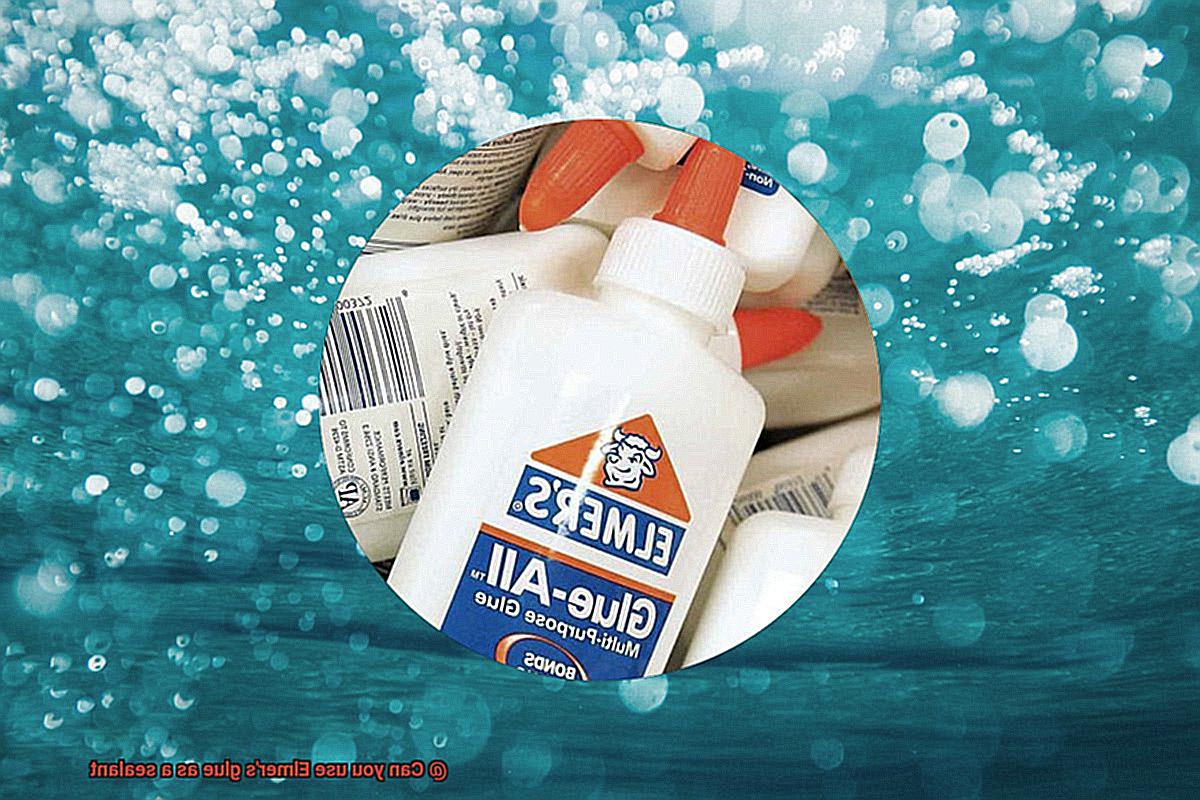
Prepping the Surface
Before applying Elmer’s glue as a sealant, it’s important to prep the surface properly. This means ensuring that the surface is clean and dry, free from any dirt or moisture that could interfere with the bond created by the glue. If you skip this step, you may end up with a weak seal that doesn’t hold up over time. Clean the surface with a damp cloth and let it dry completely before proceeding to apply the glue.
Applying the Glue
When applying Elmer’s glue as a sealant, it’s important to apply it in thin layers using a brush or sponge. Avoid applying too much glue as this can cause it to take longer to dry and potentially crack or peel. For larger areas, it may be necessary to apply several thin layers of glue, allowing each layer to dry completely before applying the next. This will help ensure a strong and durable seal.
Testing the Seal
Once you’ve applied the final layer of glue and it has dried completely, it’s important to test the seal before considering your project complete. Try applying water or other liquids to the surface and checking if any seep through. If nothing seeps through, then your seal is strong and durable. This step is crucial to ensure that the sealant has been applied effectively and will hold up over time.
Considering Limitations
While Elmer’s glue can be a great option for certain projects, it’s important to consider its limitations before using it as a sealant. For example, Elmer’s glue may not be suitable for outdoor use or in areas that are exposed to moisture. In these cases, a specialized sealant may be more appropriate. It’s also important to note that Elmer’s glue may not be strong enough for sealing wood or other materials that require a more heavy-duty sealant.
UJFzk57-Fzs” >
Conclusion
In conclusion, Elmer’s glue is a budget-friendly and adaptable option for sealing certain surfaces. Its primary component, polyvinyl acetate, makes it an exceptional adhesive that can form a protective layer over porous materials such as paper, cardboard, wood, and fabric. However, it may not be appropriate for all projects since it is not waterproof or weather-resistant and may degrade over time.
To use Elmer’s glue as a sealant effectively, you must select the right type of glue, prepare the surface correctly, apply thin layers with a brush or sponge, and test the seal before finishing the project. It’s also critical to understand its limitations before using it as a sealant and exploring other alternatives like Mod Podge, polyurethane, silicone sealant or epoxy.
Despite its drawbacks, Elmer’s glue has numerous advantages that make it an excellent choice for indoor craft projects that do not require heavy-duty protection. Its transparent drying properties make it ideal for applications where appearance matters. Additionally, it is non-toxic and easy to clean up with water.


